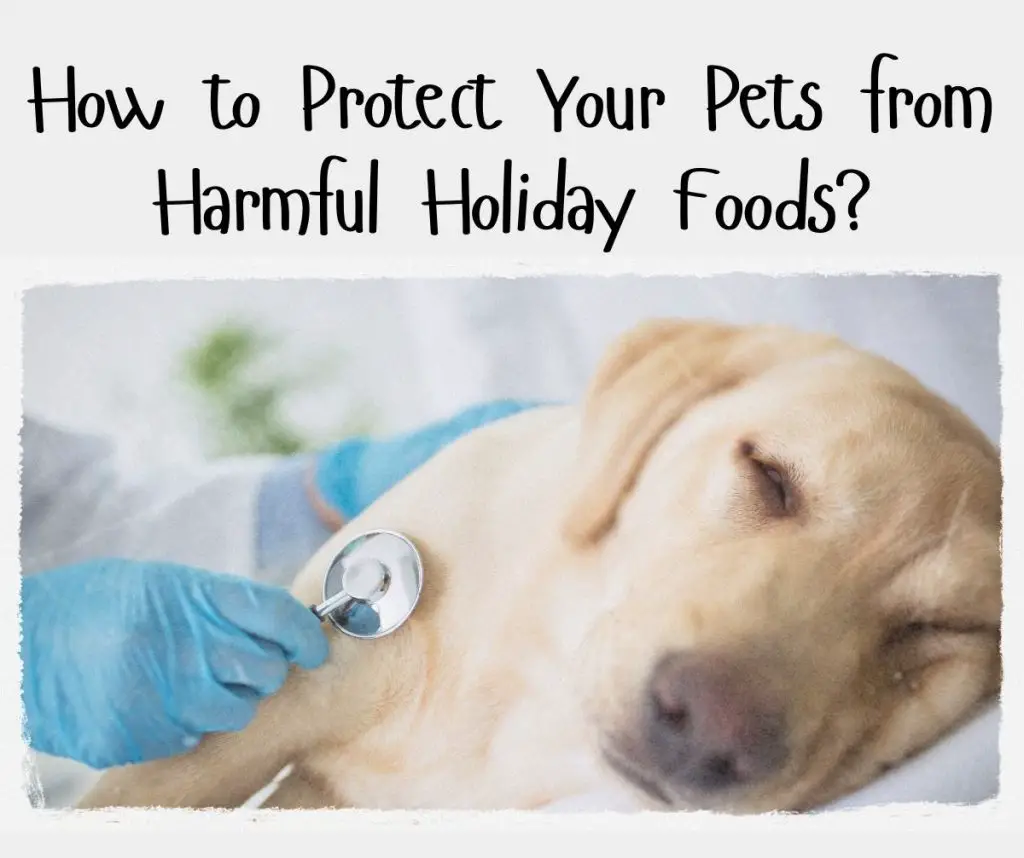The holiday season is a time of joy and celebration, often marked by the gathering of family, friends, and, of course, an array of festive foods that tantalize our taste buds. However, while we indulge in these seasonal delights, it’s important to remember that what’s a treat for us can be a threat to our pets — a festive food hazard.
As pet owners, our furry friends’ safety is paramount, especially during festivities when the risk of exposure to harmful foods increases.
Contents
Guarding Against Festive Food Hazards This Christmas
This article aims to highlight the festive food hazards to pets, focusing on practical tips to keep them safe and healthy. The holiday season often means an abundance of food, but not all of it is safe for our four-legged family members.
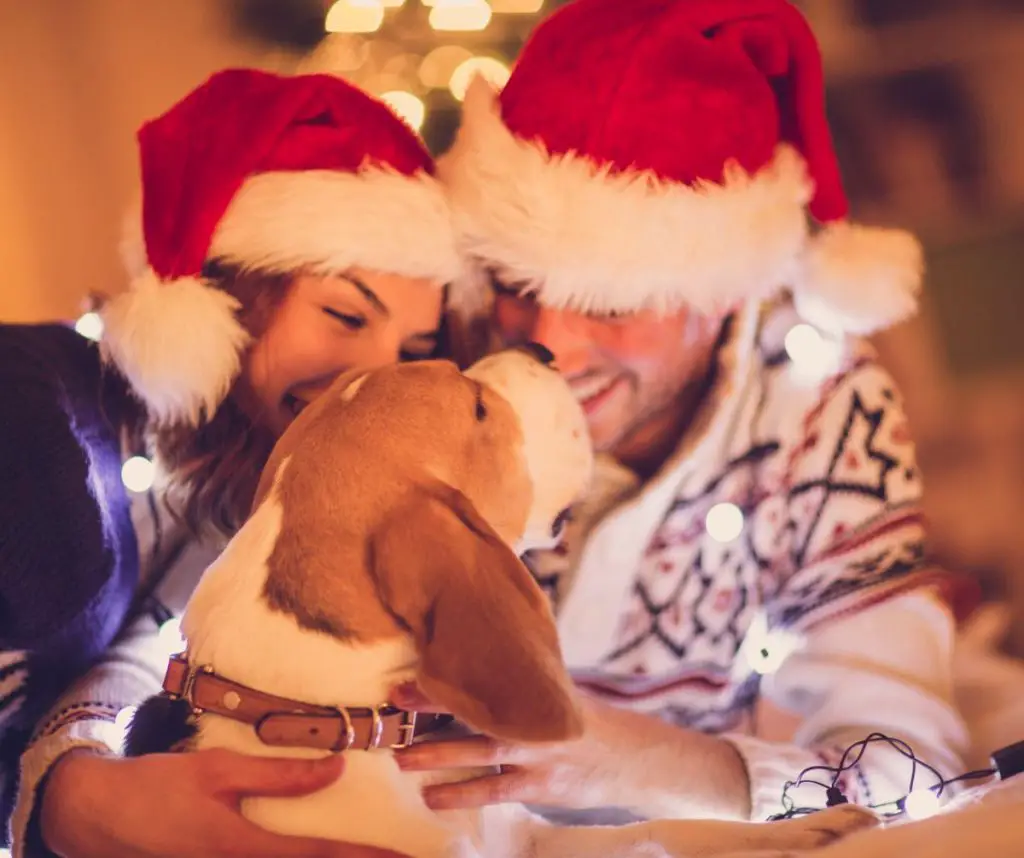
Pets are often attracted to the same foods we enjoy, yet many common festive items can be hazardous to their health. It’s crucial to understand which foods are considered festive food hazards and why.
Foods like grapes, raisins, and certain nuts pose serious health risks to pets, causing symptoms ranging from gastrointestinal distress to more severe conditions like kidney failure.
Recognizing these festive food hazards is the first step in preventing accidental ingestion.
Know Your Pets’ Risks
The holiday season, with its array of tempting treats and festive foods, can be a time of increased hazard for our beloved pets, especially for breeds like Labradors and Golden Retrievers.
These enthusiastic eaters often don’t discriminate, gobbling down anything within paw’s reach. This natural tendency heightens their risk during festive celebrations, making it essential for pet owners to be aware of and manage these festive food hazards.
Vigilance is key, as our furry friends might not understand the dangers lurking in that slice of holiday ham or piece of chocolate cake. For other breeds, while the level of risk may vary, caution is still advised. Understanding your pet’s specific dietary needs and susceptibilities is key to preventing food-related incidents.
To ensure their safety, it’s important to recognize your pet’s specific behaviours around food. Some might be overt in their curiosity, eagerly eyeing every plate, while others might quietly lurk, waiting for a chance to snatch a forbidden treat.
Being mindful of these habits allows us to tailor our approach, ensuring that our festive gatherings are joyous for both humans and pets and free from any festive food hazard.
This awareness is not just about prevention; it’s about creating a safe, enjoyable holiday environment where our pets can share in our celebrations without risk.
The Danger of Chocolates
It is important to talk about a common festive food hazard that lurks in our celebrations – chocolate. Chocolate, a holiday favourite, is particularly harmful to dogs and cats. For us, chocolate is a delightful treat, but for our furry friends, it’s a dangerous temptation.
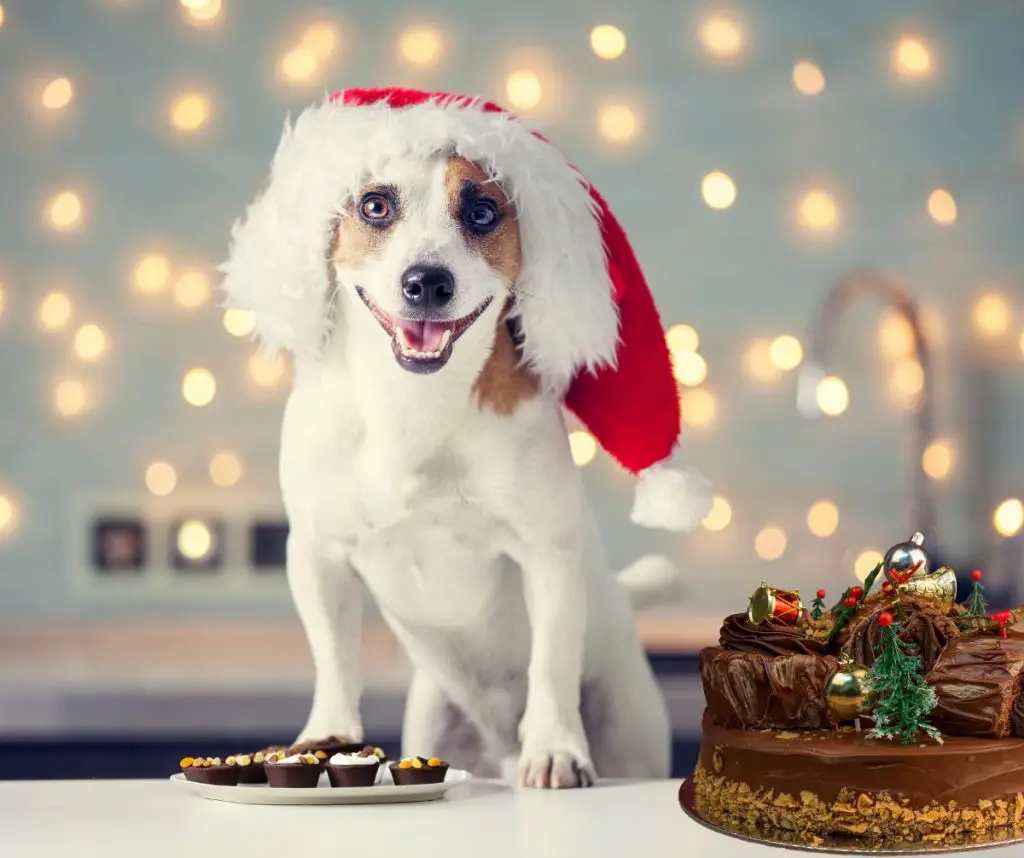
The main issue with chocolate is a compound called theobromine, found in cocoa. Now, theobromine is harmless to humans but can be deadly for dogs and cats. The amount of theobromine varies significantly in different types of chocolate.
Theobromine Content
For example, dark chocolate, often a favourite during the holidays, contains a much higher concentration of theobromine compared to milk chocolate. This means that even a small amount of dark chocolate can be particularly dangerous for pets. The higher the cocoa content, like in 85% dark chocolate, the greater the risk, with theobromine levels up to 20 times more than in milk chocolate.
On the other end of the spectrum, white chocolate has virtually no theobromine. However, it’s still not a safe treat for pets. It might not contain theobromine, but it does have high levels of fats and sugars, which aren’t good for your pet’s health either.
Understanding these differences is key to preventing a festive food hazard from spoiling the holiday spirit. As a pet owner, it’s important to be aware and keep such treats out of your pet’s reach. If you suspect your pet has ingested chocolate, it’s vital to act quickly and seek veterinary assistance, as the effects of theobromine poisoning can be severe.
So, while we enjoy our festive treats, let’s remember to keep them away from our pets to ensure everyone has a safe and joyful holiday season. Remember, when it comes to pets and chocolate, it’s better to be cautious than sorry.
Risky Festive Foods
When it comes to festive food hazards, chocolate often takes the spotlight, but it’s not the only danger lurking in our holiday spreads. There are several other festive foods that, while delicious to us, pose significant risks to our pets. It’s vital to be aware of these hazards and take proactive steps to keep our furry friends safe during the holiday season.
Hidden Hazards: The Dangers of Xylitol for Dogs and Cats
Xylitol, a common artificial sweetener found in sugar-free gum, candies, and even some baked goods, is especially harmful to dogs. This sweetener can trigger a rapid release of insulin in dogs, leading to hypoglycemia (low blood sugar), which can be life-threatening.
In some cases, xylitol ingestion can also cause liver failure. It’s not always easy to spot xylitol on ingredient lists, so it’s safest to keep all sugar-free products well out of your pet’s reach.
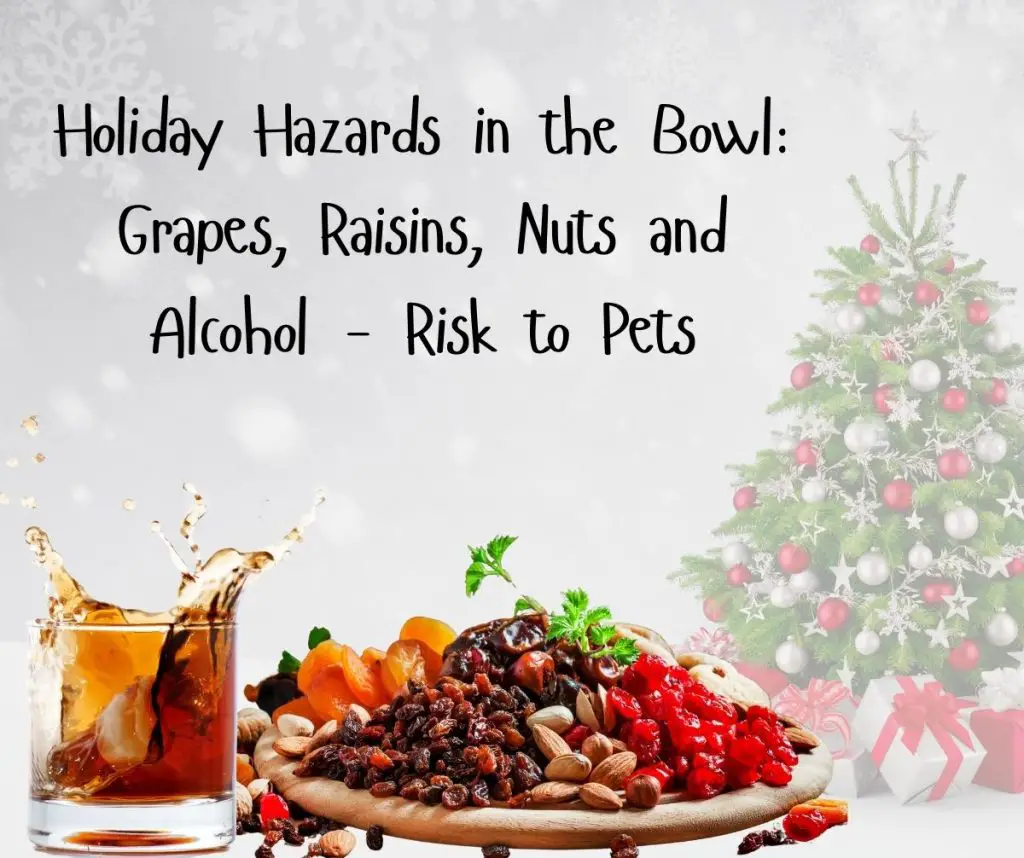
Alcohol in Holiday Foods and Its Threat to Pets
Alcoholic beverages and foods prepared with alcohol also pose a festive food hazard. Alcohol can be toxic to pets even in small quantities, leading to a range of symptoms from vomiting and diarrhea to more severe conditions like central nervous system depression, difficulty breathing, coma, or even death.
Pets can be attracted to the sweet taste of some mixed drinks, so it’s crucial to keep all alcoholic beverages away from them.
Holiday Hazards in the Bowl: Grapes, Raisins, and Nuts’ Risk to Pets
Grapes, raisins, and certain nuts, often found in holiday dishes, are especially risky. These foods, seemingly harmless to us, can cause severe health issues in pets, including kidney failure. Symptoms might start with gastrointestinal distress, but they can quickly escalate.
Additionally, table scraps that seem harmless can be dangerous. Foods high in fat, like gravy or poultry skin, can cause pancreatitis in pets, a painful and potentially serious inflammation of the pancreas. Bones from fish, poultry, or other meats can also be hazardous as they can splinter and cause choking or internal injury.
As pet owners, it’s our responsibility to safeguard our pets against these festive food hazards. This means not only being mindful of what we leave within their reach but also educating our guests about the dangers of feeding scraps to pets. Keeping our pets safe during the holidays ensures that the festive season is a joyous time for everyone, including our four-legged family members.
First Aid and Prevention Strategies
Knowing basic first aid for pets is vital, especially during the holidays when veterinary services might be limited.
First and foremost, if you suspect your pet has eaten something dangerous, try to stay calm. Your immediate goal is to figure out what they’ve ingested. Was it chocolate, grapes, or something else from the festive spread? Knowing exactly what and how much they ate is key. If you can, save any leftover food or packaging – it can give your vet vital clues.
Next, have your pet’s first aid kit ready. This kit should include the essentials: a syringe for oral treatments, gauze, saline solution, and the contact details of your nearest vet. But remember, first aid is just that – the first response.
Your next step should always be to call your veterinarian or an emergency pet clinic. They can advise whether it’s safe to induce vomiting or if other immediate actions are needed.
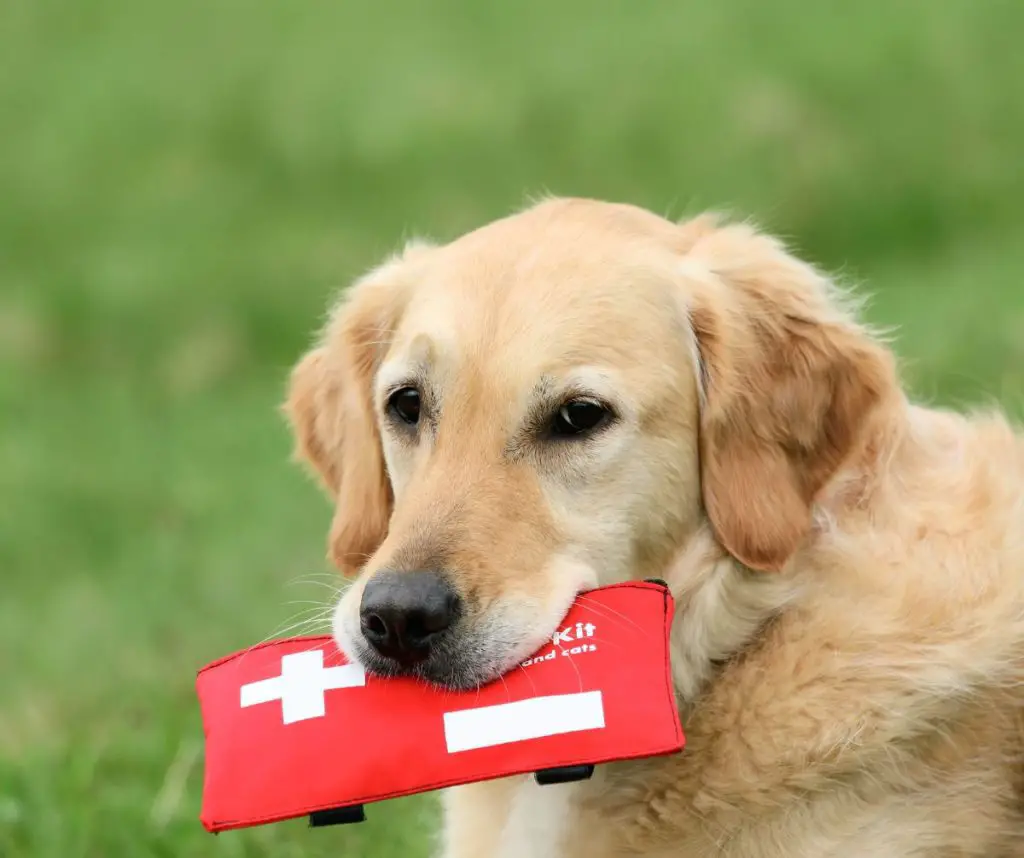
Here’s a brief first-aid process to keep in mind:
- Identify the Hazard
- Quickly determine what your pet has eaten.
- Take note of the quantity and type of festive food hazard involved.
- Contain the Situation
- Remove any remaining hazardous food out of your pet’s reach to prevent further ingestion.
- Call for Professional Help
- Contact your veterinarian or the nearest emergency pet clinic.
- They can guide you through the next steps, which might include inducing vomiting or administering a specific treatment.
- Follow Veterinary Instructions
- Your vet might instruct you on how to induce vomiting or provide first aid at home.
- They might also tell you to bring your pet in immediately. Always follow their guidance.
- Monitoring
- After the immediate steps, watch your pet closely for any signs of distress or unusual behaviour, and keep your vet updated.
Remember, when it comes to festive food hazards, prevention is always better than cure. Keep potentially harmful foods out of your pet’s reach, and educate family and guests about what foods are off-limits for pets. Enjoying the holidays with our furry friends can be wonderful, but it’s our responsibility to keep them safe from festive food hazards.
Creating a Pet-Safe Holiday Environment
Not all holiday treats are harmful to pets. In fact, several pet-safe alternatives allow them to safely partake in the festivities. Creating homemade treats with safe, healthy ingredients can be a delightful and nutritious way to include pets in the holiday spirit. Think of baking pet-friendly cookies or cakes using pumpkin, carrot, or lean meats. These treats are not only delicious but also ensure that your pets aren’t exposed to festive food hazards.
Additionally, the holiday environment can be overwhelming for pets. Amidst the joy and merriment, ensuring a space where they can feel secure is vital. Consider setting up a quiet area where your pet can retreat if the noise and activity become too much. This consideration helps in mitigating the stress that often accompanies festive gatherings, contributing to the overall well-being of your pet.
Moreover, when integrating pets into your holiday celebrations, it’s important to do so with their safety in mind. Opt for pet-friendly decorations, steering clear of items like tinsel and small ornaments that pose ingestion risks. Keep an eye on how your pets interact with guests and other animals, ensuring they are comfortable and safe.
Being mindful of festive food hazards and creating a pet-friendly environment are essential steps in celebrating the holidays with your pets. By taking these precautions, you can enjoy the festive season knowing that your furry companions are safe and happy.
A Joyful, Safe Holiday Season
As we conclude, it’s important to remember that the safety and well-being of our pets during the holidays are paramount. By being aware of the risks, preparing safe alternatives, and ensuring a secure environment, we can guarantee a joyful and safe holiday season for our beloved pets.
Consulting with a veterinarian is always recommended when it comes to your pet’s health and safety. They can provide tailored advice based on your pet’s specific needs and health history. During the holidays, it’s a good idea to have your vet’s contact information readily available in case of an emergency. Veterinarians can offer valuable insights on how to keep your pets safe from festive foods and other holiday hazards.
Let’s make this festive season memorable for all the right reasons, ensuring it’s filled with joy, love, and safety for our furry family members.

